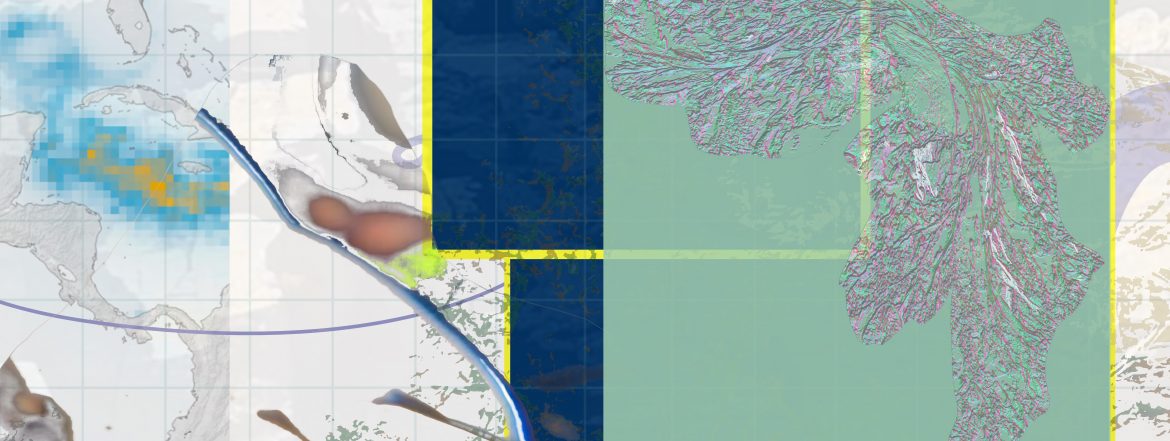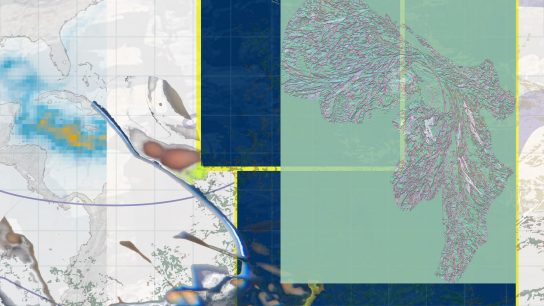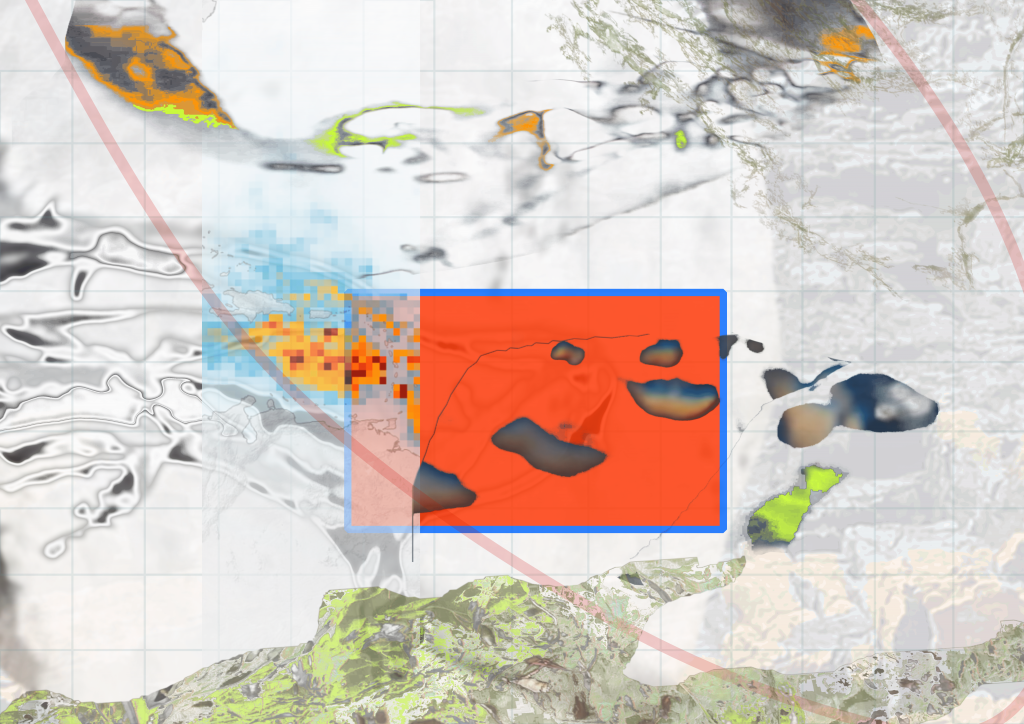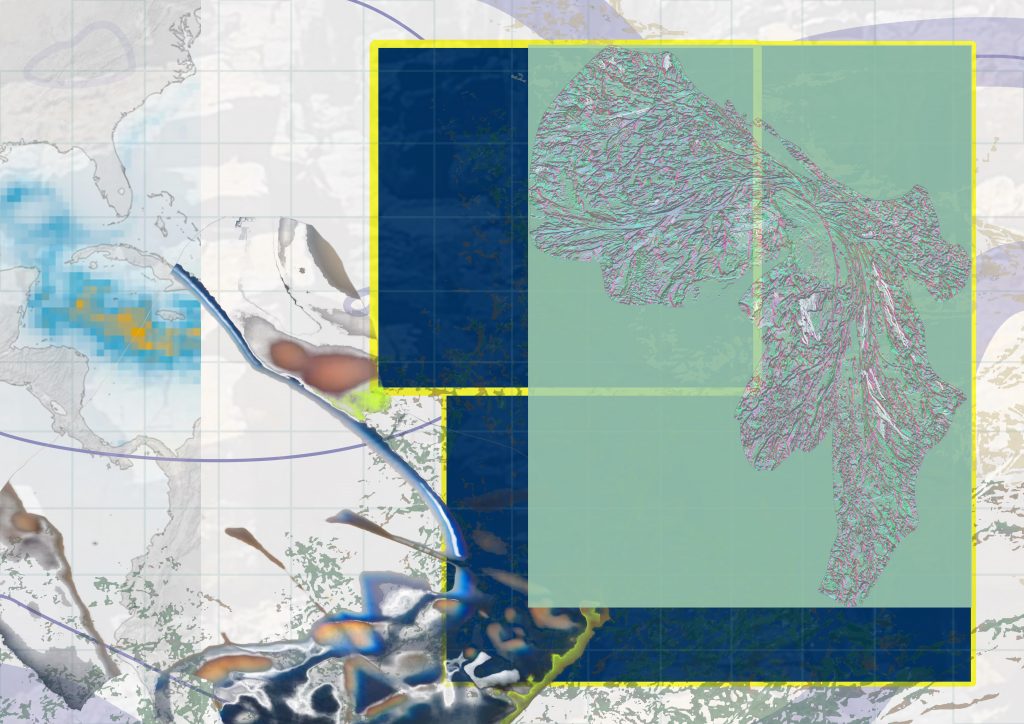States of Hydration
by
“Holding Sway: Seaweeds and the Politics of Form” is a series of photo essays that channels a visual curiosity about seaweeds with considerations of militarization, gender, Indigenous sovereignty, extractive regimes, and climate change. Foundry guest editors Melody Jue and Maya Weeks invited participants to create or curate images that literally and figuratively “hold sway” in two senses: capturing the attention of an audience, or conveying a relationship of being in touch with seaweeds by holding their swaying botanical forms.
“Storytelling acts as one method of preserving lived experiences that are held as ecological knowledges through time.”
Around the world, the evolving vistas of seaweeds on shores and in oceans present to us the temporal and spatial climate narratives that enable us to make sense of the changing world. Scientists analyze seaweeds’ growth—some now reaching between and bridging continents—to describe ecological events over time that have led to their present forms. Namely, computer simulated satellite imagery offers a macro view of the Great Atlantic Sargassum Belt—an enormous growth of seaweed stretching from West Africa to the Gulf of Mexico. Scientific studies suggest the seaweeds’ abnormally expansive growth is possibly due to discharged nutrients from increased deforestation and fertilizer use worldwide. While Sargassum offers sheltered habitats for marine life, the Great Atlantic Sargassum Belt’s coverage risks blocking their movement into their usual spaces. How does power inform land-centric processes that benefit few humans and sideline the rest, alongside other species of our greater ecologies?
In my collage series, States of Hydration, photographs of seaweeds along a British coastline background each piece, reaching further from the shore and into the sea to highlight the slippery on/offshore state of being in this space in-between. The computerized shape of the Great Atlantic Sargassum Belt is divided across the five pieces, flashing warnings of pixelated blocks in blues, yellows, oranges, and reds to highlight its density of growth across the ocean. They are collaged with digitally manipulated layers of seaweed forms, enlarged and recolored in toxic, gray-toned palettes. Their organic masses are rendered liquified and leaky, and attempts to border them into highlighted boxes—to map, contain, or target—seem futile. I use these seaweed collages as a way to tell stories about centuries of industrial discharge as it impacts oceans.
“The series alludes to seaweeds’ capacity to also replenish memory, history, and a sense of belonging to places and people as part of the gathered occasions of nourishment and oral storytelling through recipe sharing—a feeling of home held in a brothy bowl of swaying seaweed.”
Storytelling offers me ways to merge everyday evidence of environmental conflict and cases of ecocide with mythologies and speculative fictions of peoples and places. From Hong Kong’s Lo Ting to Mami Wata of the African diaspora, cultural exchanges of hybrid mythological creatures bridge connections between land and water, humans and marine life. They indicate social displacements that can be linked to changing environments, reemerging era after era to make a renewed sense of place and identity. Storytelling acts as one method of preserving lived experiences that are held as ecological knowledges through time.
States of Hydration explores the inequities exacerbated by the climate crisis through two meanings of the word “state:” 1) The borders of nation states that determine global environmental governance, uneven resource distributions, and the violence faced by refugees and migrants, and 2) The physical states of seaweed, dried into foodstuffs that can later be rehydrated into soups and other culinary forms, nourishing diasporic communities. Together, these two meanings of “state” frame how cultural, industrial, and ecological practices with seaweed exist against hostile socio-political and climatic environments.
States of Hydration juxtaposes the gridded hints of cartography and the curves of imagined trade routes with the land-like forms of enlarged seaweed. The collages comment on how once locally harvested seaweeds replicate the journeys of people, who now also call elsewhere home. In this coverage of geographies, the series alludes to seaweeds’ capacity to also replenish memory, history, and a sense of belonging to places and people as part of the gathered occasions of nourishment and oral storytelling through recipe sharing—a feeling of home held in a brothy bowl of swaying seaweed. Dried seaweeds have long been consumed in dishes and soups that sustain both health and heritages, especially across the oceans for diasporic communities. They form a tonic of reconstituted medicinal ingredients in many food cultures to restore our bodies with nutrients. In Cantonese cuisine, we replenish our yin (“cool”) energies with detoxifying ingredients, like seaweed soup, to counter the excess yang (“heat”) energies found in some yang-rich foods and caused by the moist heat of the regional climate. These practices sustain age-old understandings of holistic health as connected not only within oneself, but also with surrounding ecologies. As commodities, seaweeds also point us to the uneven politics of consumer-focused “sustainable consumption” of diasporic foods, which are transported as long-haul cargo around the world. This highlights the complex intersections of personal choice, environmental ethics and racialized food cultures.
This photo essay is part of the Holding Sway: Seaweeds and the Politics of Form series, funded by UCHRI’s Recasting the Humanities: Foundry Guest Editorship grant.







